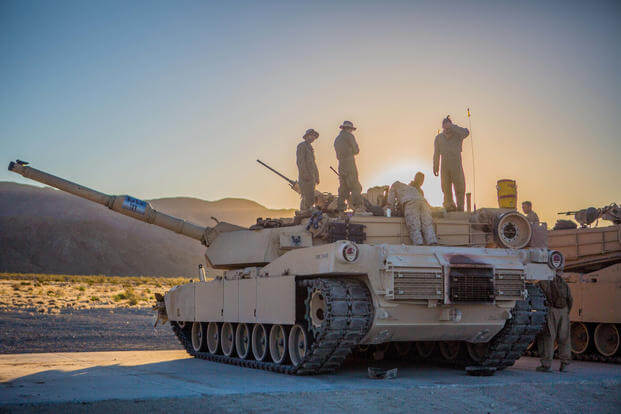Tank Marines and other leathernecks in specialties that won't play a role in the service's future will get the option of transferring to another branch or military occupational specialty, the Corps' top general said this week.
Commandant Gen. David Berger spoke to reporters Wednesday about the long-awaited force-redesign plans. One of the biggest changes to the future Marine Corps of 2030 will be its size. The total number of personnel will drop by 16,000 over the next 10 years to a 170,000-person force.
That includes ditching its tank battalions, law-enforcement units and bridging companies. The Marine Corps will also drop its total number of infantry battalions and cut several aviation squadrons as it shifts its focus toward countering China in the Asia-Pacific region.
Marines won't face the same hardships some endured during the post-war drawdown though, when thousands were cut from the ranks. This change, Berger said, "is intentionally drawn out over time so we can make the right decisions."
"No one's getting a pink slip saying time to go home," the commandant said. "... We're not forcing anybody out."
Related: Marines to Shut Down All Tank Units, Cut Infantry Battalions in Major Overhaul
The Marine Corps will rely on attrition to shed personnel from the ranks, Berger added.
"In other words, people [will be] out as they normally would," he said. "We might recruit less ... but there's no intent at this point to issue a whole bunch of go-home cards for Marines."
The Marine Corps got rid of about 20,000 people over four years starting in 2012. It involved putting sometimes-painful involuntary separation plans in place that cut short some people's hopes of making the Marine Corps their career.
Berger said Marines affected by the changes in the force redesign will "have some choice" in what happens next. That will depend on where they are in their careers though, he said.
"They can choose another military specialty to go into; they can, in some instances, make a transfer to another service," Berger said.
Some may be eligible to move into career fields that don't exist yet.
"We are fielding new capabilities that we don't have right now, so we will need Marines in specialties that we either don't have at all or we don't have nearly in the numbers that we're going to need," the commandant said.
The Marine Corps plans to spend money it will save on having fewer personnel and ditching some aging equipment on new capabilities. The service will invest in equipment for long-range precision fires, new air-defense systems and unmanned aircraft, among other things.
The Marine Corps carried out a series of war games that showed areas where it can cut some existing capabilities, a 15-page memo on the force design states.
When it comes to tanks, the Marine Corps found "sufficient evidence to conclude that this capability, despite its long and honorable history in the wars of the past, is operationally unsuitable for our highest-priority challenge," the report adds.
"Heavy ground armor capability will continue to be provided by the U.S. Army."
-- Gina Harkins can be reached at gina.harkins@military.com. Follow her on Twitter @ginaaharkins.
Read more: The Marine Corps Must Get Smaller to Get Better, Commandant Says














